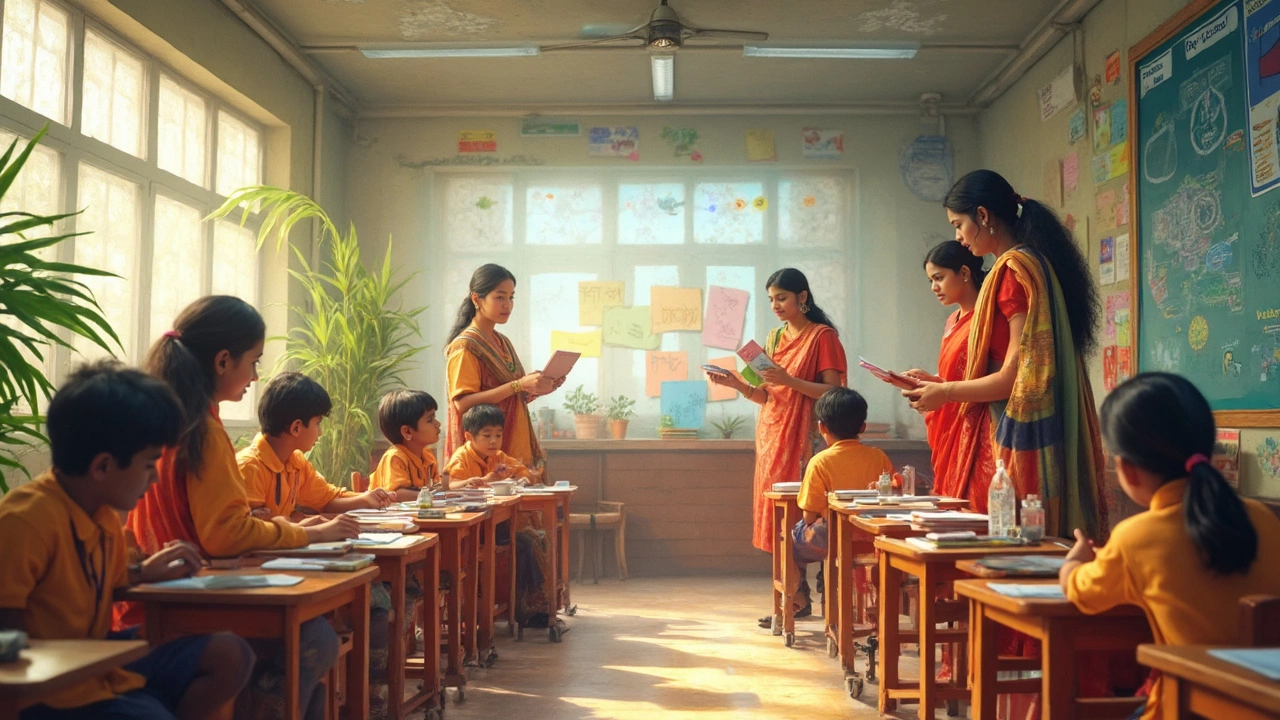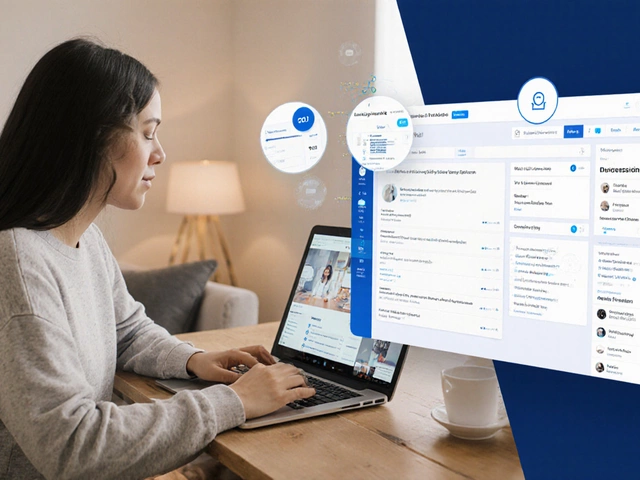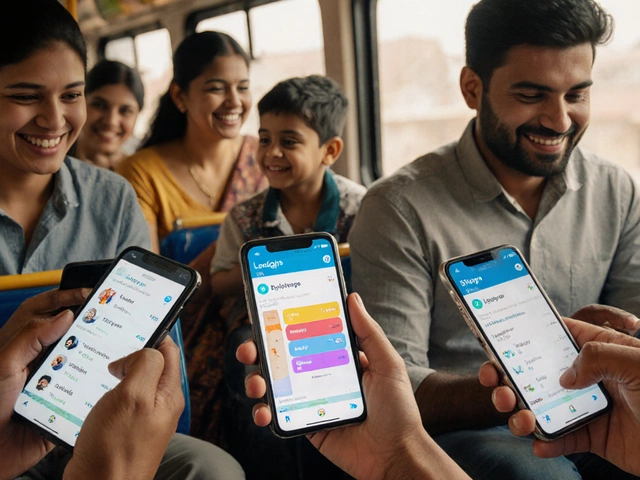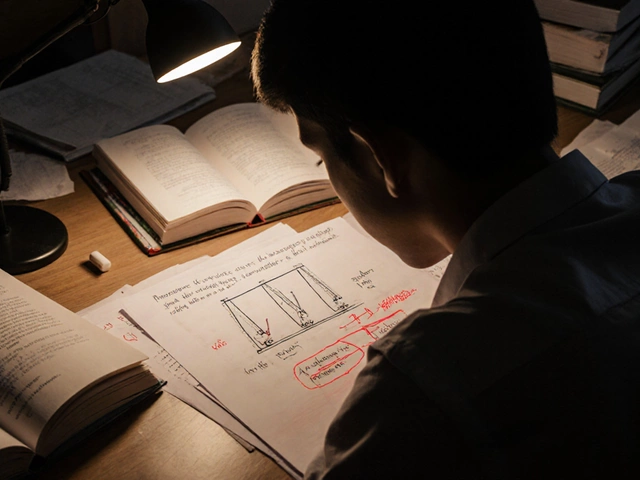Ever met a teacher who could make algebra feel like stand-up comedy? Or one who turns grammar lessons into life hacks? Those teachers aren’t born with that skill—it’s built with serious, targeted training. Here’s a little-known truth: a teacher’s first training year often makes or breaks their future in the classroom. Still, the big question hangs around like a tricky exam question: Which training actually makes teachers better at reaching kids? There’s no one-size-fits-all answer, but some routes are proving way more practical—and way more effective—than the rest.
Why Old-School Training No Longer Cuts It
The idea that a couple of workshops in August can keep a teacher sharp all year is outdated. The classic model—learning theories in stuffy lecture halls—barely makes a dent in day-to-day classroom reality. Teachers crave the kind of strategies that solve real-world problems, not buzzwords they’ll forget before September. For example, a 2023 Education Week survey showed only 29% of teachers felt traditional seminars helped them manage challenging students. That number should make school leaders cringe. It’s a sign: the chalk-and-talk model is as stale as last week’s cafeteria pizza.
Now, digital resources are everywhere, but clicking through endless slides or scavenging for ideas on YouTube doesn’t turn anyone into Mr. Feeny. Instructional videos can give a burst of inspiration, sure, but lasting growth comes from hands-on, ongoing support. Some districts are finally catching on, ditching the “sit-and-get” for programs offering live coaching and peer observation. These are gaining traction because teachers actually use what they learn. Practice beats passive learning every time.
Consider this: Finland’s teacher prep requires the equivalent of a master’s degree, plus months of classroom immersion with experienced mentors. The U.S., by contrast, often sends teachers into classrooms after just a semester or two of student teaching. This gap isn’t just academic; it’s visible in teacher confidence, student engagement, and retention.
The Power of Mentoring and Coaching
Mentions of “mentor teachers” used to make new hires groan, but the evidence is turning skepticism into excitement. Individual support from a seasoned pro is the single strongest predictor of teacher confidence, according to a 2024 study from the Learning Policy Institute. First-year teachers matched with mentors are about 30% less likely to quit by year three. That’s huge right now, with teacher shortages making headlines.
Here’s how effective coaching plays out: instead of generic “tips,” a mentor visits the classroom, observes in real-time, gives targeted advice, and follows up with practical suggestions. Imagine struggling to get sixth graders to stop shouting answers. A mentor might model a subtle hand-signal routine, walk you through it, and stick around until the routine sticks. That’s actionable. That’s memorable. And, crucially, it leads to small wins every week.
Peer coaching models—where teachers regularly observe and support each other—are exploding in popularity, especially in charter schools and forward-thinking districts. There’s even data to back up the buzz. A 2022 meta-analysis in the journal "Review of Educational Research" found that teachers who received sustained coaching improved student achievement by about as much as adding several extra months of school for each kid. That’s the power of positive feedback, practical modeling, and a safe space to make mistakes.

Tailoring Professional Development (PD) to Real Needs
Nothing frustrates teachers faster than PD days packed with buzzwords and no clear connection to the classroom. Smart districts now ask teachers what they actually need, tailoring sessions to local challenges. This trend isn’t just logical, it’s backed by numbers: research from the RAND Corporation in 2023 showed that customized PD programs boost teacher satisfaction rates by almost 40% versus off-the-shelf packages.
For teachers in high-poverty areas, strategies for addressing trauma or managing large, diverse classes can literally change careers. Special ed teachers want better ways to write IEPs and use technology. Rural teachers might need creative ways to do more with fewer resources. When PD lets them focus on those real pain points, it’s more than professional hoop-jumping—it’s fuel for better days at school.
Another overlooked factor: time. Teachers do not want after-hours workshops or extra weekend tasks. The best training happens during the school day, with paid coverage and built-in collaboration time. Schools making this shift are seeing a payoff in reduced burnout and higher morale.
| PD Model | Reported Teacher Usefulness (%) | Dropout Rate Reduction |
|---|---|---|
| Mentoring/Coaching | 74 | 30% |
| Traditional Workshops | 29 | 12% |
| Customized, Needs-Based PD | 68 | 26% |
The message is clear: PD needs to get personal and practical, or it gets ignored. Teachers know what matters to their students—let them help decide the menu, not just eat what’s served.
Technology as a Training Tool (But Not a Crutch)
Tech is everywhere, but it’s not a magic potion. The right platforms, though, can make training much more flexible and personal, especially for rural or part-time staff. Online mentorship programs, virtual classroom simulations, and video-based reflection tools are game changers—not just for teaching techniques but for building community among isolated teachers.
For instance, in Texas, some districts connect rookie teachers with mentors hundreds of miles away using real-time video and instant feedback platforms. In-person shadowing isn’t always possible, but virtual observation means teachers can see best practices in action any day of the week. Another cool trend: micro-credentials. These bite-sized, skill-focused programs let teachers stack up expertise at their own pace. A new study in “Teaching and Teacher Education” found that teachers who completed three or more micro-credentials were 40% more likely to apply new classroom strategies than those who attended traditional PD.
But here’s the catch: tech should amplify training, not replace real-life collaboration. The most useful programs use hybrid models—some face-to-face, some online—giving teachers the chance to experiment, reflect, and get real feedback. What matters most is building confidence, not just checking boxes or racking up login hours.

Things That Actually Work: Real-World Tips for Schools
Schools looking to get the most out of teacher training need more than slogans. Here’s what makes the difference:
- Prioritize Mentorship: Pair every new teacher with a mentor who's been in the trenches. Let them co-plan, observe, and debrief regularly.
- Build In Collaboration Time: Create dedicated, workday time for teachers to meet, share, and learn from each other—don’t expect it to happen before or after school.
- Offer Choice and Voice: Let teachers help pick PD topics and formats. Interest leads to engagement, and engagement leads to growth.
- Focus on Practice, Not Theory: Prioritize live demonstrations, modeling, and immediate classroom application over theoretical lectures.
- Leverage Technology the Right Way: Use tech to make training more accessible, but keep real human connection at the center.
- Continuous Feedback Loop: Use short, regular check-ins and follow-ups after PD—not just end-of-year surveys—to make sure new skills stick.
Looking ahead, the best teacher training won’t be something you can order by the box or cram into a single summer. It comes from building a culture where teachers learn the way we want kids to: with curiosity, with support, and with the freedom to fail first, then get better. If every school leader took this seriously, imagine how many more kids would have that teacher who makes every lesson the best part of their day.




